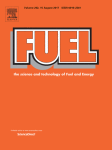 Authors: M. HILLESTAD¹, M. OSTADI¹, G.d. ALAMO SERRANO², E. RYTTER¹, B. AUSTBس, J.G. PHAROAH, O.S. BURHEIM
Authors: M. HILLESTAD¹, M. OSTADI¹, G.d. ALAMO SERRANO², E. RYTTER¹, B. AUSTBس, J.G. PHAROAH, O.S. BURHEIM
Affiliations: ¹Department of Chemical Engineering, Norwegian University of Science and Technology, NO-7491 Trondheim, Norway; ²SINTEF Energy Research, N-7465 Trondheim, Norway; ³Department Mechanical and Industrial Engineering, Norwegian University of Science and Technology (NTNU), Trondheim, Norway; Department of Mechanical and Materials Engineering, Queens University, Kingston, Canada; Department Energy and Process Engineering, Norwegian University of Science and Technology, Trondheim, Norway
Reference (APA): Hillestad, M., Ostadi, M., Alamo Serrano, G. D., Rytter, E., Austbø, B., Pharoah, J. G., & Burheim, O. S. (2018). Improving carbon efficiency and profitability of the biomass to liquid process with hydrogen from renewable power. Fuel, 234, 1431–1451. https://doi.org/10.1016/j.fuel.2018.08.004
Abstract: “A process where power and biomass are converted to Fischer-Tropsch liquid fuels (PBtL) is compared to a conventional Biomass-to-Liquid (BtL) process concept. Based on detailed process models, it is demonstrated that the carbon efficiency of a conventional Biomass to Liquid process can be increased from 38 to more than 90% by adding hydrogen from renewable energy sources. This means that the amount of fuel can be increased by a factor of 2.4 with the same amount of biomass. Electrical power is applied to split water/steam at high temperature over solid oxide electrolysis cells (SOEC). This technology is selected because part of the required energy can be replaced by available heat…”
Comments: the authors have developed in MATLAB a model of the Fischer-Tropsch reactors used in their study. The model is embedded in the MATLAB CAPE-OPEN Unit Operation wrapper from AmsterCHEM and plugged into Aspen HYSYS v9 where the remaining of the process flowsheet is modelled.
